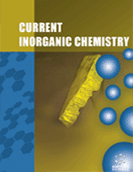Abstract
The chemical forms (species) of aluminum in blood plasma and brain extracellular fluid are considered, as they are the candidates for brain aluminum uptake and efflux. The blood-brain barrier is the primary site of brain aluminum uptake. The mechanism of brain uptake of aluminum transferrin, long thought to be mediated by transferrin-receptor mediated endocytosis, requires further investigation. Brain Al citrate uptake has been attributed to the sodium-independent Lglutamate/ L-cystine exchanger system, system Xc-. Reports have suggested aluminum can compromise blood-brain barrier integrity, however the studies were conducted with aluminum concentrations greatly exceeding those seen in human blood plasma. Aluminum appeared in cerebrospinal fluid suggesting it can cross the choroid plexus and in brain after intranasal application suggesting it can be taken up by cranial nerves, but neither of these routes has been definitively demonstrated. Brain aluminum efflux appears to be carrier-mediated, however the mechanism has not been identified. A small increase in brain aluminum seems sufficient to produce neurotoxicity. Once aluminum enters the brain it persists there for a very long time; estimates of the half-life range from 20% of the lifespan to greater than the lifespan. Al persistence in bone, which maintains the majority of the body burden, may influence brain Al, due to equilibrium among the bodys organs. Chelation therapy with desferrioxamine has been shown to reduce some manifestations of aluminum toxicity although it may increase redistribution of aluminum to the brain to increase aluminum-induced neurotoxicity. An orally-effective aluminum chelator that is an improvement over desferrioxamine has not yet been demonstrated. Although a non-essential metal, there are mechanisms enabling aluminum to get into the brain, accumulating over the lifespan, and creating the potential to contribute to many neurodegenerative disorders.
Keywords: Aluminum, blood-brain barrier, brain efflux, brain influx, chelation, choroid plexus, neurotoxic factor, BRAIN ALUMINUM, L-methionine
 28
28

